#heathenism
Text
Casual ways to connect with your deities
-Pray to them or just just talk with them and tell them about your day
-Light a candle and say your thanks
-Offer your meal/snack to them or bake/cook with them or for them
-Watch a movie in their honor
-Offer your morning drink to them or make a cup for them
-Assign them a plant and take care of it as a devotion to them
-Listen to music that reminds you of them
-Say good morning/good night
-Thank them for the things you see that you consider beautiful

#paganism#pagan#polytheism#hellenic polytheism#hellenic pagan#hellenic paganism#hellenism#kemetic#kemeticism#heathenry#heathenism#norse paganism#deity devotion#deities#deity#deity work
4K notes
·
View notes
Text
i find it fascinating how my perception of the gods have changed once i met them. both in looks and personality.
Freyja, related to beauty, love and lust, i believed would look young and very feminine. Yet, when presented with her, she was a gorgeous, mature woman with lines at her eyes and a towering figure. The realization that a goddess I acknowledge as being so gorgeous had wrinkles and strong facial features made me reconsider my own perceived “flaws” and standards of beauty. She was beautiful in her strength and wisdom and yet also in her divinity and confidence. I had forgotten a woman of extreme beauty was also a goddess of war. And in both being true, I found her to be the most powerful woman I know.
Seeing Hades, I believed he would be fearsome and cold. Yet, when I looked into his eyes, there was warmth. He had an appearance of a man in his 40s with long hair, the color of the night, and he had no resentment or even disdain. Only softness. I didn’t fear him nor did he try to have me do so. He was safe as he led me through the courtyard where we met. Where I thought he would be an imposing and cold-hearted figure, I found someone with such patience like a father-figure would have.
Apollo, whom I thought would be bubbly and funny from how I’ve seen others described him was indescribably elegant. He carried himself well. He was kind and patient. Where I thought I would find youthful naivety, I found charm and elegance. And he only asked to help me in my healing. Even when I thought I did not need him, he waited patiently until I could hear him properly. And no matter how long it took, he was still welcoming with a smile.
I truly believe everyone should have the opportunity of meeting their deities and finding how they appear to them. What they show themselves as is what you may need. I find it fascinating to see how others see them :) They love us very much.
#deity work#deity worship#apollo deity#apollo worship#hades deity#hades worship#freya deity#freyja#freyja deity#freyja worship#hellenic polytheism#hellenic pagan#hellenism#hellenic deities#norse paganism#norse heathen#heathenry#heathenism#paganism#pagan witch
447 notes
·
View notes
Text

What is Norse Heathenry?
Norse Heathenry is a contemporary pagan spirituality derived from the beliefs, customs, superstitions, and folklore of the pre-Christian Norse people. It is one of a few different kinds of Heathenries, which include Slavic Heathenry and Teutonic (Germanic) Heathenry.
The word "heathen" means "of the heaths." However, it's not a word the Old norse people themselves used. They didn't have a word for their spiritual belief system, as they didn't distinguish this from all other aspects of their lives. Rather, "Heathen" was coined by Christian writers to refer to Scandinavian pagans (this is also why it's sometimes used interchangeably with the word "heretic").
Nowadays, Norse Heathenry is referred to by many names, which reflects different developing iterations of it. Amongst these names are Norse Paganism, Asatru, and Forn Sidr / Forn Sed.

Where does Norse Heathenry come from?
Norse Heathenry comes from the Nordic countries of Europe: Norway, Sweden, Denmark, Iceland, and the Faroe Islands. These places are also known as the homelands of the vikings.
But despite their shared origins, Norse Heathenry is not the religion of the vikings. This very large misconception has a very long, complex history behind it, owed to a combination of commercialization and fascist tampering. The Heathenry we see in America is extremely muddied from these influences. Fortunately, we now have the means to disambiguate it, thanks to increasingly accessible cultural exchange.
The following explanation is a product of ongoing anthropological, theological, and cultural research, in combination with what we know about the historical.

Norse Heathen Beliefs
Unlike organized religions, Norse Heathenry is (and has always been) a decentralized belief system. This means it has no universal doctrines, no orthopraxy or orthodoxy, no holy texts, and no religious figurehead governing it. When you hear people say "There's no 'right' way to practice Heathenry," this is generally what they're referring to.
However, Norse Heathenry does have a distinct way of thinking about and viewing the world, and it's very different from what we usually see here in the US. If you're feeling stuck trying to figure out how to "do Heathenry," this would be why.

Animism
A staple of Norse Heathen epistemology is Animism.
Usually, Animism is defined as the belief that all things have a spirit or vital essence to them. But this is only one definition of many, and not the definition that applies here.
The Norse concept of Animism is "the awareness that all things are part of an interdependent ecosystem." This changes how we engage with everything around us. We understand that when we interact with the forces of this world, they will interact back on their own merit. Our relationship with all things is a social one, and we're not spectators in our environment, but active participants at all times.
This stands is stark contrast to the way the USAmericans typically view the world: As a landscape to either test or be tested by, with the forces of the world acting as the means through which this is done.
Additionally, there's no separation between the sacred and the profane.

Immanence
Faiths that focus on spiritual ascension, enlightenment, or attaining a good afterlife are known as transcendent faiths.
While Norse Heathenry has some transcendent elements, it's ultimately an immanent belief system, which means its focus is on living life for the sake of living, as opposed to living life to receive a good afterlife. A good afterlife is already guaranteed.
(Some Heathens may strive for a specific kind of afterlife, however, which do have certain conditions for accessing. But these are elective rather than required, and different as opposed to superior. It's all a matter of preference, at the end of the day.)

The Norse Gods
Many people are already familiar with the Norse gods, such as Thor, Odin, Loki, and Freyja, but not many people are familiar with how they operate as gods.
In Hellenism and Religio Romano, the gods are divine lords who preside over different domains of society. It's a reflection of what the ancient Greeks and Romans highly valued in their civilizations: Law and political/civic involvement.
In Norse Heathenry, however, gods don't operate in a lordship capacity. Instead, they're more like celebrities in that they're celebrated figures everyone knows about.
While they don't rule over one thing or another, the Norse gods often act as allegorical representations of worldly phenomena. Thor is to thunderstorms as Loki is to "random-chance odds." SIf is to wheat-fields as Odin is to the old wandering beggar. Frey and Freyja represent masculine and feminine principles, Skadi the driven snow and foggy winter, and so on. The gods exist as worldly experiences inasmuch as they exist as ideas.
Lastly, but importantly, the Norse gods don't distribute rewards or punishments in accordance with on one's actions or deeds, nor do they tell us how we ought to live our lives. The way they interact with us depends on our individual relationships with them, which can be just as diverse as the ones we have with each other.

Myths & Folklore
What people often refer to as the "Norse Myths" are stories found in two old Icelandic texts called the Prose Edda and the Poetic Edda. These texts are special because they're the oldest and largest collection of tales featuring the Norse deities.
However, these texts represent just one region's period-specific interpretation of Norse folklore. They also only represent a fraction of the tales that still circulate within Nordic oral traditions, so not only are they not "canon" in the usual sense of the word, they're also just a sample.
This is all to say that Norse Heathenry doesn't have a hard body of mythology. It certainly has a defined one, but its definition is built from local legends, fairy tale humor, songs, customs, superstitions, and family folklore in addition to what survives on runestones and parchment. The corpus of Heathenry is very much a living, breathing thing.

Spirits
Norse Heathenry recognizes a wide variety of different beings, the likes of which can be found all around us. Some of these beings are like how we typically imagine spirits, in that they're incorporeal or otherwordly, while others are physical but may play tricks on you so you can't see them.
Like many things pertaining to Heathenry, there isn't a universally-shared classification system for Norse beings. But generally-speaking, beings are defined by their natures and the manner in which they relate to the rest of the world, rather than their morphology. For example, Trolls can take the appearance of rocks, trees, and also living people, but they can also be incorporeal spirits. This is all, however, the same kind of Troll, rather than being different types of trolls.
This is also why the lines between "spirit", "god," and "ancestor" can become very blurry at times. In English use, these are all typically labeled under the category "vaetter." Sometimes "wight" is used to refer to spirits of various types, but isn't often used to refer to gods.
Typically, the way people interact with spirits entirely depends on what kind of spirit they're dealing with, as well as their disposition towards human beings. Some spirits may enjoy a personal relationship, while others are best when left unbothered.

Values & Morality
Because Norse Heathenry has no doctrine and is immanent in nature, it has no fixed value system. Just like the stories were decentralized, so were the Norse people's values.
This is a feature as opposed to a flaw, and a fact as opposed to a theory. But it also has a habit of making Americans very uncomfortable.
For this reason, Heathens sometimes choose to construct their own value system to observe as part of their practice. But what those values are is up to each individual, and individual community, if applicable.
Anyone claiming Norse Heathenry has a universal value system is either new to Heathenry, or selling something.

Veneration
Heathen veneration is not just limited to gods, but also includes ancestors and even certain kinds of spirits, such as nisse/tomte.
Like most things in Norse Heathenry, what, who, and how a Heathen chooses to venerate is their choice to make. One popular observance across the globe is to craft altars, shrines, or similar sacred spaces for the entities one venerates. If a Heathen lives in a house that has a nisse (similar to a gnome), they might leave porridge (with butter) by the hearth for him, and he'll in turn bless the house with good luck and fortune.
Oftentimes, relationships with entities are very interpersonal. Heathenry's animistic and immanent nature means entities are rarely cold and distant, including the gods.

Misconceptions!
A list of misconceptions off the top of my head:
The practice known as 'Odinism' is an invention of the Germanic Volkish movement, which was the social precursor to Nazi Germany. This is also, unfortunately, the first kind of "heathenry" to be brought to the US, back in the 1970's. It was spread through the country via one of the fastest-moving networks at the time: The US prison system.
The Black Sun is a Nazi symbol, not a Heathen one.
No, Norse Heathenry is not a closed practice.
No, you don't have to have Scandinavian heritage to practice Norse Heathenry. Blood quantum is not a thing.
The rune alphabets are old, but the method of runecasting is new.
So is the use of magical bindrunes.
Bindrunes are also different from Galdrastafir. The latter is actually a form of Jewish-Christian-Norse syncretism and needs to be taught orally since it's a mystery tradition. You can still slap the Helm of Awe on things and look cool about it though.
Norse Heathenry is not the same as being a viking, and Norse Heathens are not vikings. However, some Heathens partake in viking reenactment as an extension of their practice.
There's no good or bad gods in Norse Heathenry. All the gods are capable of great good and great bad, just like people. They're fallible, and that's what makes them relatable.
Odin and Loki aren't at odds with one another.
You don't need to wait for a god to pick you to start venerating them.

If you're interested in learning more about any of these in-depth, check out the website I've built on Norse Heathenry, located in my pinned post!
1K notes
·
View notes
Text

#heathen#heathenism#norse mythology#asatru#polytheism#norse pantheon#norse heathen#norse paganism#norse gods#norse#odin#viking god#viking#vikings#wolves
86 notes
·
View notes
Text

181 notes
·
View notes
Text
Some heathen aesthetics that arent ⚔️🩸
(not that those are bad! I love those too, I've just seen a severe lack of anything about the brighter sides of magic and the natural world from a heathen perspective. It's strange to me. Heathenry is so deeply about protection, interconnectedness, and rebirth- there deserves to be more art and aesthetics embodying these positive aspects!)
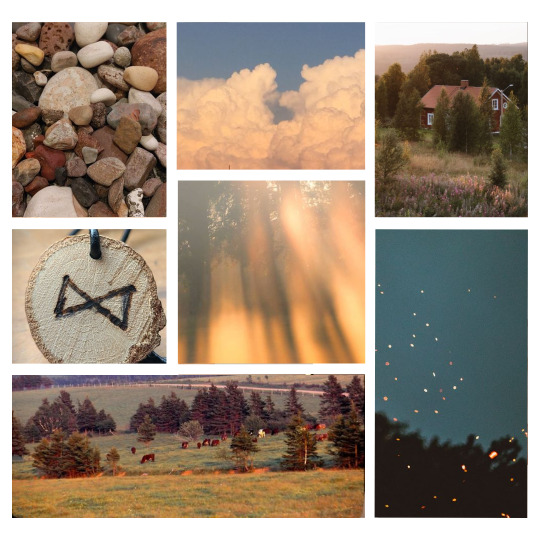
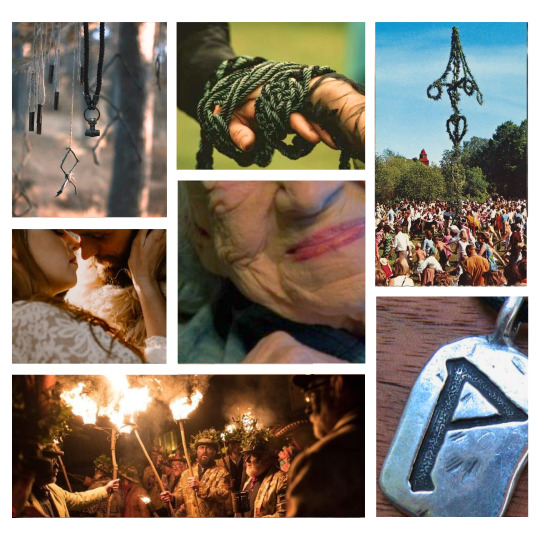

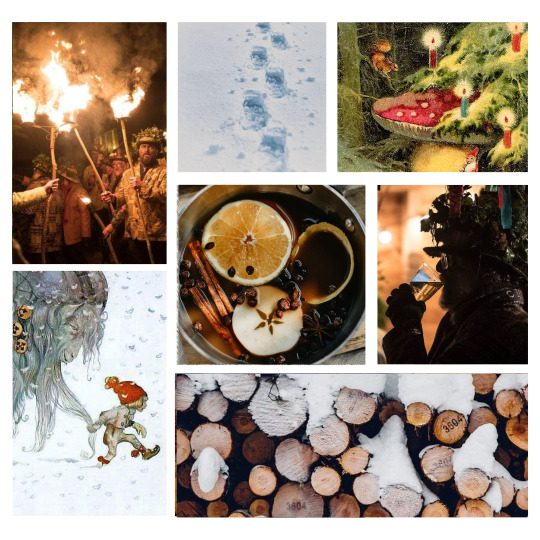
#heathenry#heathen#pagan#norse pagan#paganism#norse paganism#heathenism#heathen art#moodboard#pagan aesthetic#witch aesthetic#norse witch#pagan moodboard
123 notes
·
View notes
Text
random little ways that I've started worshipping more bc why not:
braided yarn around my wrist for Eir, pronoun bracelets for Dionysus, and chewelry necklace for Loki, and (eventually) a gold anklet for Aphrodite (currently the earrings I wear every day until I get it)
having a glass of wine and giving some to all of my deities in their respective cups
changing the color of my lamp light depending on who's hanging out (between purple red pink and green for me for now)
setting aside little trinkets I think any of them would like + putting them on their respective altars
putting on music they seem to like (at least one of them likes every single one of the songs on my playlist)
just hanging out with them when I can + they want to
letting the spirits hang around sometimes (Eir + Loki both seem to like my little buddy that has been with me for 9-10 years atp)
being cunty just bc I can (Dionysus, Loki, and Aphrodite seem to like that)
really dramatically and film-worthily acting out my daydreams (Dionysus gets SO hyped)
scrolling through the body positivity tag whenever I start to get self-conscious (they all seem proud when I do that, but Loki makes it known more (I think Aphrodite will be down too but I haven't gotten like that yet with her as part of the group))
just dressing up pretty!! it feels like I'm channeling Aphrodite :))
I'll probably put more on this list as things progress
#pagan witch#paganism#pagan#deity work#deity worship#eir#dionysus#hellenic polytheism#heathenism#loki
53 notes
·
View notes
Text
Repurposed wooden spoons are wonderful for wall decor for the Heathen Home!

#heathenism#paganism#norse paganism#anglo saxon#medieval#pagan altar#witchcraft#runes#wiccecræft#norse deities#hearth#heathenhome
60 notes
·
View notes
Text
anyways since im up paganposting
fuck gerald gardner
#paganblr#pagan#paganism#norse paganism#heathenry#heathenism#irish paganism#celtic paganism#celtic#germanic paganism#larkle's thoughts
89 notes
·
View notes
Text

#heathen#atheism#atheist#heathenism#religion#dank humor#dankmemes#dank meme#dank memes#lol memes#memes#meme#fresh memes#funny meme#funny memes#relatable memes#stolen memes#lol wtf#lololol#sorry lol#lol#oof lmao#lmao#villain#christians#prayer#daily blessing#faith
887 notes
·
View notes
Text

Patron deities: Tyr, Odin, Thor, Freyr/Frigg/Freyja
107 notes
·
View notes
Text

Grandmother Mountain
ig@hrafnsunnaart
#mountain#heathen#art#spiritual#grandmother#surreal art#pagan#crone#aesthetic#sketch#nature#witchcraft#heathenism#witchblr
88 notes
·
View notes
Note
Hey what's the deal with Thursatru? Something feels off about it to me...
You can ignore my last ask; I saw you answer someone else who had the same question
Well first for posterity: Thurs (or Tussar) are Jötun, and Jötnar are the wild, untameable forces of nature. But unlike most Jötnar, Thurs are wild to the degree that they are actively and decisively incompatible with human wellbeing.
They represent the most extreme and destructive phenomena of nature, like rockslides and volcanic eruptions—stuff you have no chance of surviving if you get caught in its path. The destructive nature of Thurs is where we get the meaning of the rune Thurisas from.
Folklore has it that Thurs commonly dwell where humans fundamentally cannot. Some are said to live in Jötunheimen national park, up where the mountain peaks are swallowed by the clouds and where nothing grows. They throw rocks down at people passing by.
They also live in the volcanos of Iceland (Muspelheim). Thurs such as Sutur are responsible for the destructive nature of volcanos, spewing fire, ash, and molten rocks, while cracking open the land during an eruption.
My understanding is that it's uncommon for people to venerate the Thurs, but not for any taboo reason. Rather, it's the same reason why we don't worship wild tigers; "worship" is not the kind of relationship that builds any rapport with them. For most people, their relationships with Thurs involve being cautious of their nature and staying out of their way.
This is the way Thurs are understood in folklore. Now, to understand what Thursatru is, and what its deal is, take everything I just said and throw it out the window.
"Thursatru," from what I've gathered, basically characterizes itself as the Satanism of Heathenry, and it only makes sense in relation to specifically the American flavor of Asatru.
Keep in mind not refering to all of Heathenry in America, but to the way Icelandic Ásatrú is interpreted by Americans: The Eddas are treated as scripture, the past is treated as doctrine, Valhalla is treated as the goal to aspire to (awarded to those who live by the "viking values" outlined in the Havamal, or the snake-oil known as the Nine Noble Virtues), and Odin is treated as the Supreme Being and Loki his adversary.
The phrase "Asatru"—meaning "true to the Aesir"—is viewed as almost like an oath of office. You are pledging yourself to the Aesir's "side" in a prophesized cosmic war, fought between the forces of Order (represented by the Aesir, especially Odin) and Chaos (represented by the Jötnar, with figures like Loki, Ymir, and Sutur).
Jötnar basically fulfill the same function in American Asatru that demons and devils do in Christianity. If Satanism is the worship of all that is antithetical to the Christian god and Christianity, then Thursatru is the worship of all that is antithetical to the Aesir and Asatru belief. By being Thursatru, you're choosing to oppose the Aesir, aligning yourself with the forces destined to fight against them during Ragnarok.
And yes, all of it is extremely corny.
None of Heathenry was ever like this, and much of American Asatru is Christianity in viking garb.
Rockslides are dangerous, but not evil. Volcanic eruptions are disastrous, but not evil. The natural processes of the world—processes that are essential for life on Earth—don't always align with our needs as individual organisms. In fact, some of these processes will always be to our detriment if we stand in their way, as is the case volcanic eruptions and rockslides. That is the Thurs. That is who they are and what they represent.
So basically, the thing that's "off" about Thursatru is that it exists as a reaction to the narrative of American Asatru, and actually legitimizes that narrative to the public eye because it conforms to the American Asatru claim that venerating the Thurs fundamentally opposes the Aesir.
It's not true though, and that logic doesn't check when you put Heathenry back into its own paradigm. Saying Thurs-venerating opposes the Aesir is like saying "Exploring volcanos means you fundamentally oppose the existence of human-friendly environments." Like, what.
The only thing that actually makes someone Aesir-opposing, is their stance of opposing the Aesir. Venererating Thurs just makes someone Norse Heathen.
It's shenanigans all the way down.
77 notes
·
View notes
Text
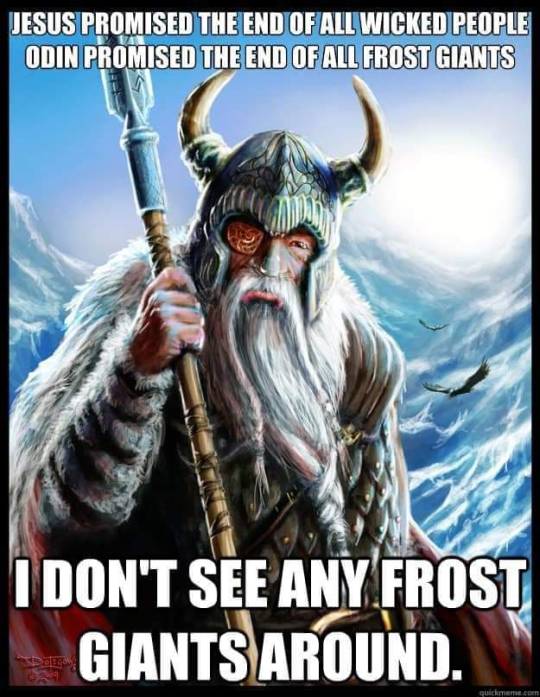
#heathen#heathenism#norse heathen#asatru#norse mythology#norse pantheon#polytheism#viking#vikings#hellenic pagan#norse paganism#pagan#paganism#pagan witch#odin
39 notes
·
View notes
Text
Saga, goddess of storytelling
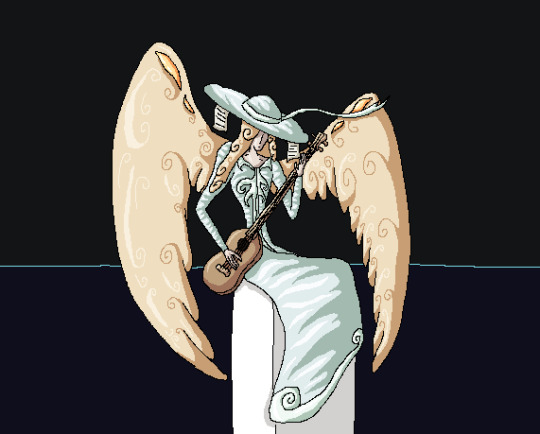
Devotional art I drew for the goddess Saga.
#saga#goddess#goddess saga#saga goddess#deity#deity work#deity worship#devotional art#pagan#paganism#norse paganism#norse pantheon#norse gods#norse mythology#norse heathen#heathenry#heathenism#heathen#paganblr
75 notes
·
View notes
Text
I had a dream in which I founded a theistic satanist church called the Church of the Fallen Seraphim and I repurposed a rundown church and we had bake sales and an occultist book club every fortnight and did satanic marriages for people who wanted it and a sobriety group and had services and prayer groups and professionally organised and safe adult swingers parties and mental health support drop in services and support for the homeless... it was beautiful. I really wish our community had a place like that.
#theistic satanist#rambling#theistic satanism#satan satanist#satanism#spiritual satanism#religion#pagan#satanic worship#heathen#heathenism
200 notes
·
View notes